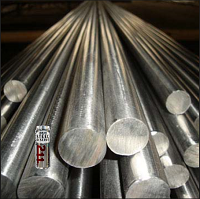Meet the ‘Greenburst’ ES-335 – a 1968 model
Post# of 128807

“This is a really neat Gibson ES-335. It’s a ’68 by serial number and features a green-to-yellow sunburst. At Well Strung Guitars, we just call the finish ‘Greenburst’ – I sent some pictures to Gibson, and they had no idea what to call it, either! The sides of the guitar are a very deep green/black colour.
“I say ‘green/black’ because from a certain angle it looks black, though it’s actually a very dark green. But the finish is translucent, and if you look closely, you can see the grain through it. The same translucent colour is also on the back of the neck.
“Another interesting thing is that it’s never had a label [normally visible through the bass-side f-hole]. It was never there. Under black light [ultraviolet light] you’d see remnants of the glue. But there’s nothing. It says ‘custom’ on the truss rod cover, and it has an unusually large neck. The nut width is still the narrower [1 9/16‑inch] type of the period, but this guitar’s neck is unusually deep.
“As you get past the 5th fret, it feels large. That makes me think it must have been made for someone specifically, like many of the rare custom instruments we have here. I don’t think it was a trade-show piece because they probably wouldn’t have used a neck like this. It’s in the special-order log at Gibson – which confirms it was a special order, obviously – but there’s nothing else written in there except the serial number and model number. It doesn’t say anything about the colour or specs at all!
“However, I was told by Gibson that there was a music shop in the United States owned by a lady who was in love with the colour green. And every year, she ordered a custom instrument for herself. What makes this compelling is that I also have an interesting green [Epiphone] Riviera – which would also be a great guitar to feature here at some point! This Riviera is also a transparent green.

“It’s not a Royal Olive finish, which some readers may have heard of – it’s just a kind of murky, transparent green guitar with a dark finish on the back of the neck, like this ES-335. I’ve never seen a dark-green neck like this, aside from on the two guitars I’m talking about.
“Like the Gibson guitar here, the Epiphone Riviera was recorded in the factory’s special-order log, except in this case the entry does mention the colour green, not a specific shade, just ‘green’. We can also confirm it was sent to this woman’s music store in 1967.
“This ES-335 is a 1968 model and was shipped to the same music store. Was it made for her personally? It’s hard to say. It’s possible she didn’t have big enough hands to enjoy this neck. I mean, it’s unusual, particularly for the time period. Most 1968 Gibsons have tiny necks. This one is huge.
“Aside from the finish, neck and missing label, it features the standard ES-335 specs of the time. It has a trapeze tailpiece, nylon saddles and two T-top humbucking pickups – the pickups sound great! And it has the short scratchplate, chrome hardware and double-ring/double-line Kluson tuners. That’s all standard stuff, but the rest of it is very unique. It’s pretty neat. And that’s always been my great love – seeking out strange guitars.

“We recently shared some images of another 335 we have at Well Strung Guitars that features a kind of ‘iced tea’ ’burst and [an Epiphone] Casino fretboard [with parallelogram inlays]. I bought that 1969 guitar because I thought it was cool.
“I realise there is more than one of them because Gibson was using up their Epiphone stock in the late ’60s before production moved overseas. But it’s always been my thing to find such strange instruments.
“I’ve just got a cool Burns guitar that came into the store – a prototype that is a freak of nature. I mean, I’ve never seen anything like it before. It’s got three Tri‑Sonic pickups and a Strat-style solid body with the pickups mounted to the pickguard. It also has three hardware-store-quality three-way toggle switches on it.
“It’s a very prehistoric build. You don’t often get to see UK-built stuff like that here in the US. There were a lot of really great British guitars and amps that never made it over here. So it’s cool that I can share some of these US rarities with you guys.”
Source:
https://www.yahoo.com/entertainment/meet-gree...33675.html
 (2)
(2) (0)
(0)